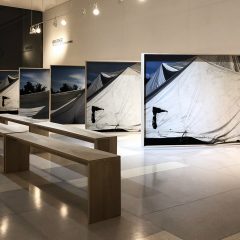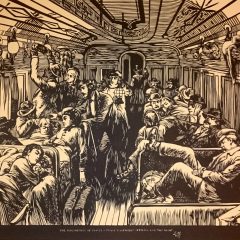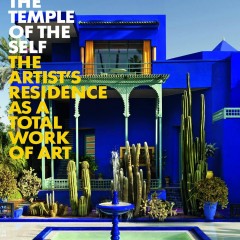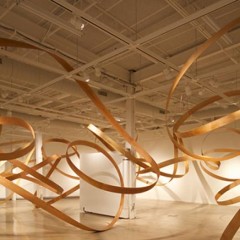With temperatures rising, it almost felt like spring last Friday while I roamed around Old City, taking in several First Friday shows. My first stop was Sound and Silence at Artist’s House, which runs through March 27. The show is a beautiful, varied collection of works – mostly oil paintings, but also sculptures and lithographs – by more than two-dozen artists. The title says it all: many of the works depict contemplative subject matter, but there’s also some noise.
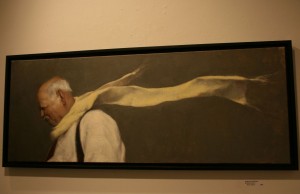
The silence is in paintings of tranquil landscapes or people deep in thought. The sound is literal in several places, like Harold Kimmelmann’s Firecracker, a sculpture of the object at its moment of explosion, but mostly it is below the surface. The man in Samuel Evensen’s Wyeth-esque Wings to Fly seems wrapped up in thought, but if the painting came to life, we would hear the wind whipping around him.
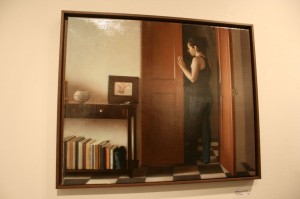
And in Amber Lia-Kloppel’s calm interior Evanesce, the girl’s mouth hangs open: is she speaking? about to speak? Lia-Kloppel’s painting also highlights the historical Dutch undercurrent running throughout Sound and Silence, which features several interiors, portraits and still lifes with roots in the Dutch Baroque.
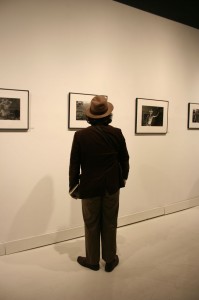
Next up was Island Cuba, the photography show running through March 26 at Dalet Gallery. Four Cuban photographers, Pedro Abascal, Mario Diaz, Lissette Solorzano, and Enrique de la Uz are showing black and whites shots taken in their native country, and American photographer Charles Anselmo’s large color photographs of abandoned Cuban factories are also on displays. With the exception of Anselmo’s images, these photographs can be seen as quiet studies of people through four lenses. Most striking are the different ways in which each photographer interacts with his or her subjects. In Abascal’s shots, people do not make eye contact with the camera; their heads are often turned away completely. But Abascal himself is often reflected in the shop windows he photographs, which underscores his presence and reminds us that his subjects don’t always seem to know he is photographing them. He also photographs mannequins, the ultimate anonymous figures, adding to the dialogue about identity.
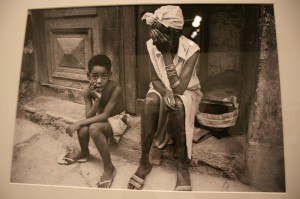
Solorzano’s photographs offer a contrast. She zooms in on people, on their faces, hands, and legs. Even when they are purposefully avoiding the camera lens, Solorzano’s subjects know she is there.
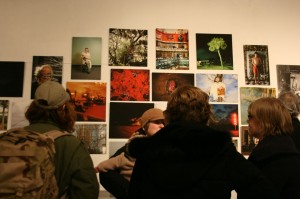
I found more photography a few blocks away at Silicone Gallery. They are hosting the 47th SPE Conference and Silicone Gallery Photography Contest, on through the 27th of March. Flyers on the table inside told me that of 350 submissions received on Tuesday of last week, they choose 47 images, which were printed in-house on Thursday evening. That’s a seriously quick turnaround, and the lively jumble of photographs on the walls reflects the sort of crazy energy that must have gone into putting the display together. The small gallery space is bursting with a funky mixture of shots of all sorts of subject matter, from a covered bridge to a giant McDonald’s billboard surrounded by horses.
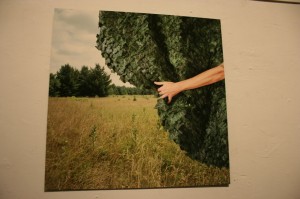
That almost all of the photographs are in color, and practically dripping with it, is a refreshing change of pace from a lot of photography shows. And there is something appealing about looking at prints that were made using the printers that line the gallery space. This show, and those at Dalet and Artist’s House are well worth a look.
Emily Friedman is a 2009 graduate of Bates College in Art History. Now, she is working as a curatorial intern at The Barnes Foundation and getting back in touch with her Philadelphia roots.


